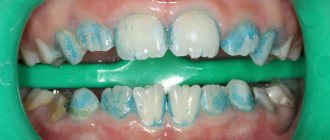Root rot is a plant disease that all farmers are strenuously trying to combat. We have prepared an article for you in which we will tell you about the types of root rot, methods of controlling pathogens and treating the plant. Also in this article you will learn how to identify this or that type of mushroom in the field.
Agricultural workers rarely divide root rot into subspecies, and because of this they cannot solve the problem of the disease of their plants. Correct diagnosis – 90% success!
There are a large number of varieties of root rot, but we will talk about 5 types:
- ophiobolosis,
- fusarium,
- helminthosporiosis,
- rhizoctoniosis,
- cercosporellosis.
We do not consider the remaining species because they are not significant for winter wheat.
Wheat root rot: symptoms
All of these diseases, except cercosporellosis, affect the roots of plants, and the symptoms at the initial stage of the infection are approximately the same.
Absolutely all of the listed types of fungi infect the root part of the stem. As a rule, root rot can progress to basal rot when it was poorly developed. If the development of root rot is serious, the plant simply dies.
But nowadays people actively use disinfectants, so very often root rot turns into root rot only when it is not sufficiently restrained.
What does root rot look like?
Only ophiodisease is visually quickly recognizable; it causes focal white hair. If you see spots 1-2 meters in diameter on the field, especially in the lowlands where there is more moisture, then most often this is ophiodisease. The remaining rots are usually evenly distributed throughout the field.
If you do not have in-depth knowledge of botany, then the only correct option for making a diagnosis is to order a laboratory analysis. You can determine that a plant is affected by root rot yourself, but the exact name of the pathogenic fungus will only be known after analysis.
You should not save and neglect the services of the laboratory, otherwise you may not only launch the field this season, but also get problems next year.
Root rot: different causes
So, unlike all other types of fungi, cercosporellosis affects only the root part, and therefore is root rot. And very often cercosporellosis is confused with rhizoctoniasis. As a result, ineffective drugs are used.
If you think you have Rhizoctonia in your field, will you apply fungicides? It’s unlikely, because it’s absolutely pointless. But against cercosporellosis, using fungicides during the growing season is a good solution. Even if symptoms are already present, treatment will help stop the disease from spreading to the rest of the field.
Plant condition assessment table
There is a table that can be used to score each plant based on its appearance.
With a score of 1 point, you can not take active actions. Manifestations that correspond to this rating do not affect the yield and will not cause losses to the economy of your farm. With a rating of 4 points, the plant can be said to die.
And at what point, at what stage should you start solving the problem of root rot? We can say that actions at any stage are practically meaningless.
Cercosporellosis is controlled by fungicides at the stage of symptom onset, ophiobolosis can be protected from by prophylaxis, and other types of rot cannot be affected directly in the field.
If root rot has appeared in your field, it is most likely the result of erroneous actions last season.
Symptoms of the disease
It is recommended to use transparent containers for cultivating epiphytes, partly because this way the condition of the root system can be monitored. Healthy roots are elastic, hard, smooth, and have a grayish-greenish color. If you manage to diagnose the disease in time, it will be much easier to revive the plant.
Characteristic signs of illness are:
- the leaves have become soft and not elastic (watering does not help);
- a coating of algae or spores is clearly visible on the inner walls of the pot;
- aerial roots do not look the same as before (darkened, shriveled, etc.);
- the flower wobbles in the pot, as it is not held in place by rotten roots.
If at least one of these symptoms is observed, the plant should be immediately removed and examined. The longer an orchid is without roots, the more difficult it is to revive it. Symptoms that indisputably confirm the putrefactive process are:
- acquisition of dark brown shades by rhizomes;
- the presence of slimy and wet areas;
- the appearance of liquid from the root when pressed;
- decomposition of rhizome tissue into separate threads.
So, the diagnosis has been established. What to do now? Rotten roots cannot be restored in any way. This process is completely irreversible. How to grow roots and save the plant? After all, without roots it cannot survive.
Urgently to intensive care...
The following steps should be taken:
- the orchid is removed from the pot;
- the root system is cleared of soil residues and thoroughly washed;
- All rotten roots are mercilessly cut off using a disinfected instrument (scissors, knife), leaving only healthy tissue;
- cut areas are treated with crushed coal and fungicide;
- if traces of mold are found, then it is necessary to hold the flower in a weak solution of potassium permanganate for several minutes.
Only now can the damage be fully assessed. Further actions depend on whether the roots remain.
Root rot remedies
But control of root rot is still possible, and it mainly involves plowing and seed treatment. In general, seed preparation is one of the main processes that gives you an advantage over diseases.
There are several ways to protect a field from root rot, but not all of them are effective for each disease:
- seed treatment,
- treatment with fungicides during the growing season,
- incorporation of plant residues.
The table shows what works and what doesn't for each type of root rot:
Ophioillosis is not controlled by seed treatment, nor is cercosporellosis. Cercosporellosis is a root rot, so seed treatment has no effect on the development of the pathogen.
Fungicides can be used to treat the field for all types of root rot, but in the case of fusarium, helminthosporiosis and rhizoctonia, this will be a simple prevention. Plants can only be cured with fungicides against ophiobolosis and cercosporellosis.
Opheobolosis is controlled by strobilurins, cercosporellosis is controlled by any good triazoles. Triazoles must be in sufficient concentration and contain the original active ingredient.
How to save an orchid without using a greenhouse?
As in the previous case, the plant is rooted at a temperature of 20 to 27 °C, in a place shaded from direct sunlight. But how to revive an orchid in this case, when there is no home greenhouse or greenhouse?
The pre-treated rosette is placed in a deep glass vessel. Every day, in the morning, soft, boiled or filtered water is poured into it so that its surface touches only the lower part of the remaining root system and does not wet the leaves. The orchid remains in this form for up to 6 hours. Then the water is drained and the flower is dried until the next morning.
There is one feature on how to revive an orchid without roots faster and more efficiently.
Add a teaspoon of honey or sugar syrup to water per liter of liquid. In addition, to moisten the substrate or water all reanimated orchids, it is useful to use:
- specialized complex fertilizers in very low concentrations;
- feeding with iron preparation;
- monthly treatments with a growth regulator.
How to revive an orchid that has lost not all its roots, but only part of them? In this case, the plant is still able to feed in the usual way, so you can grow the missing roots by planting the flower in a pot with a diameter of 6–8 cm with a regular substrate. Lighting for 12 hours and a temperature of 20–25 °C will cause the root buds to activate. At night, the temperature should not drop, and the humidity should be maintained at an elevated level.
Instead of watering, use fine-drip irrigation of the top layer of the substrate, or place the container with the orchid in a tray with a small amount of water for half an hour. The soil should be moistened again only after it has completely dried. New root growth begins within 1–4 weeks.
A video about how to save an orchid if the roots have rotted and the plant has lost the ability to receive moisture and nutrition will help clarify all the nuances of a complex procedure. Thorough theoretical preparation will prevent you from making mistakes in practice, and soon your favorite flower will again decorate your home collection. Read about orchid diseases!
Video about the interesting experience of nurturing an orchid without roots
The importance of these parts in the life of a flower
Roots and leaves are very important for an orchid.
Roots:
- Collect moisture.
- Accumulate nutrients.
- Carry out photosynthesis.
We talked in detail about what to do if a flower flood occurs in a separate article.
Leaves:
- The condition of the leaves can indicate how well the plant has adapted to its external environment.
- Dense and elastic leaves indicate that the flower developed under drought conditions.
- The leaves are somewhat compacted in species that grow in open spaces with good lighting.
- Shade-loving orchids have soft and light leaves that quickly burn in the sun.
What are the consequences of their absence?
The consequences of such a circumstance will be obvious. A flower cannot grow without these important elements. His gradual death will occur.
To determine how serious it is, you need to inspect the roots for damage.
The following signs will indicate the death of the root system:
- Color change (you can find out what the normal color of a healthy root system should be and why it changes here).
- Slimy and wet areas.
- If you press on the roots, water will flow out of them.
- The presence of collapsed thread-like roots.
Prevention of root rot is the best treatment
The most important method of control, which limits the development of any variants of root rot, including root rot, is the incorporation of plant debris.
But in this case it is very important that the plant residues rot completely before new crops are planted.
If the remains remain in the root layer or slightly below without access to air and do not rot, this means that after a year when plowing, the entire infection will be realized again.
This technique is found in no-till. The whole task of no-till is the transformation of plant residues and the preservation of humus. With proper no-till, the residues should rot before sowing the next crop.
Fungicide for root rot in ophiobolosis
Externally, damage to the root system by opheobolosis cannot be noticed. It occurs in a very short period, and the fungus remains in the soil for 10-15 years.
Ophiodisease is not transmitted by seeds. In anaerobic conditions of high humidity, about once every 4-5 years it gives an explosion in development. As a rule, this manifests itself in the south of Russia and in the Central regions, and much less often in other regions.
The occurrence of ophiobolosis can be predicted if there was at least 40 mm of precipitation in May. Then the disease begins to appear not as an isolated case, but as a lesion of most of the field.
What drugs can block it? Fungicides from “Makhteshim” or preventive treatments with strobilurins during the period from the beginning of booting to the end of tillering are suitable. The amount of working fluid should be sufficient to spill the product to the root collar.
How to resuscitate at home: step-by-step instructions
Is it possible if all the roots and leaves have fallen off?
In this case, urgent resuscitation actions are needed. In this case, the flower is planted in a small greenhouse, which is purchased at a specialized store or made independently from a plastic box. Expanded clay and moss are poured onto the bottom of the greenhouse.
After which the plant is carefully placed there. In this case, good lighting is very important, so you should purchase a phytolamp in advance.
The following procedures are followed:
- Periodically you need to soak the flower in a nutrient solution and water.
- Wipe the base where the leaves should appear with substances to stimulate growth.
- Bathe the orchid in water with the addition of special preparations.
Preparations that are added to water to restore the root system:
- B vitamins. They help restore rotted root systems. The flower needs to be soaked in this solution once a month and wiped once a week.
- Growth regulators. They contain phytohormones that restore the structure of the roots. The plant should be soaked in them monthly (you can learn about effective means for growing orchid roots here).
- Fertilizers based on potassium and phosphorus. They are fed once every 2 months.
- Glucose. If the plant is healthy, then glucose is produced itself as a result of photosynthesis. A sick flower needs feeding containing this substance, since glucose promotes the formation of new cells.
- Microfertilizer with iron chelate stimulates the growth of roots and leaves.
Read more about how to resuscitate an orchid without roots here.
Without growth point
In this case, all rotten roots are removed. This is done using previously disinfected scissors. Then the plant is installed in the water so that its upper part rises above the water. You need to move the container with the orchid to a well-lit place. This way the orchid will begin to recover, and a new root system should soon appear.
We invite you to watch a video about the resuscitation of an orchid without a growing point:
No” not a single sheet
If the orchid’s leaves begin to fall off, but the root remains unchanged, the following restoration tips will help:
- You shouldn’t wait for all the orchid’s leaves to fall off; you need to remove the flower from the pot and inspect the condition of the root system.
- It is necessary to monitor the system of natural leaf change so as not to confuse the natural process with a pathological condition.
- The rules for watering indoors must be clearly regulated.
- If you have just purchased a plant, you should immediately check the roots for rot or diseases (what leaf diseases are found in orchids?).
- If necessary, you need to use an indoor greenhouse.
- From time to time it is worth replanting the flower into a new substrate.
- Strictly adhere to the concept when using strengthening agents.
We invite you to watch a video on how to revive an orchid without leaves:
Root rot: treatment for rhizoctonia
Rhizoctoniosis looks like spots with sclerotia inside the spot area, and it is very easy to distinguish from cercosporellosis, in which the spots are eye-shaped and completely light. The tips of the roots of a plant with rhizoctonia look like sharpened pencils.
And if cercosporellosis can be treated with any fungicides and triazoles, then they do not work with rhizoctonia. The only option for controlling rhizoctonia is treating seeds with carboxamides.
Rhizoctoniosis as root rot rarely occurs because it requires a large supply of infection. But if this did happen, then most likely there were grain crops there several years ago, and the undecomposed straw was buried deeply.
When does resuscitation no longer make sense?
When all the roots of an orchid have rotted and all the leaves have withered, it will be impossible to save the plant.
But if, nevertheless, small parts of the roots remain in normal condition, then it is worth trying to revive the orchid.
- To begin with, all rotten areas of the plant are removed. Then it dries well.
- Where the cuts were made, the areas are disinfected. This is done using activated carbon. It is crushed into powder, and the sections are treated with this product.
- After this, the areas where future roots should form are treated with vitamin solutions.
- And that is not all. After all these actions, constant care and feeding of the orchid is necessary.
Root rot: treatment of helminthosporiosis
Helminthosporiosis is a simple, as it was previously called, ordinary root rot. Controlled by any triazoles during seed treatment.
As a rule, helminthosporium does not cause root rot. This is a soil fungus, it attacks the roots and weakens the plant when it is in a stressful situation. And this, as a rule, is a disease of spring crops.
So: treat the seeds before sowing, carry out preventive work with fungicides and cover up plant residues. If you follow these tips comprehensively, you can protect your field from root rot as effectively as possible.
Another aspect of seed processing is drying in a conveyor grain dryer. This does not prevent rot, but it prepares the seeds for sowing, and the likelihood of infection by parasites and fungi is reduced. Why should drying be done using a conveyor dryer? You can find out in this article: Conveyor grain dryers: operating principle and advantages
Is it possible to revive an orchid if the roots have rotted?
Indoor orchids are considered difficult to care for and maintain only because many novice gardeners' plants die due to loss of the root system.
Is it possible, and how, to revive an orchid in which most of the roots that feed the flower have rotted or dried out? The autumn-winter period is most dangerous for people from the tropics, where there are practically no seasonal fluctuations in temperature, light and humidity. In the warm season, actively growing, flowering orchids feel comfortable in natural conditions, easily tolerating the lack of lighting, heating and additional air humidification. (Phalaenopsis orchid - butterfly flower)
But by winter the picture changes. And the plant noticeably slows down its growth, consuming less nutrients and moisture. What is the reason that orchids die at home, and how to save a beautiful flower?
If the grower did not react in time to the change of season, did not adjust the care of the orchid and the conditions of its maintenance, the consequences in the form of weeping, rotting roots will certainly make themselves felt.











